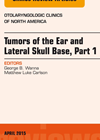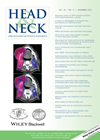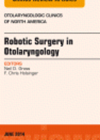
Journal Reviews
When ears go bad
Whilst rare, squamous cell carcinoma is the commonest primary malignancy of the temporal bone and is discussed in this review article. This tumour frequently presents with otalgia, ottorhoea and hearing loss; less commonly, with facial palsy or parotid mass. Investigations...
Proliferative Verrucous Leukoplakia; which one is this one?
Oral leukoplakia has the potential for malignant change and it may frequently require histological analysis and a period of regular clinical observation. The majority of oral leukoplakia remains constant but there is a subset that progress to carcinoma. The authors...
In the future there will be robots
This edition of review articles encompasses the emerging techniques of robotic surgery, written by international experts from centres that are increasing their repertoire of procedures. The treatment of oropharyngeal cancer is challenging irrespective of modality, as oncological and functional outcomes...








